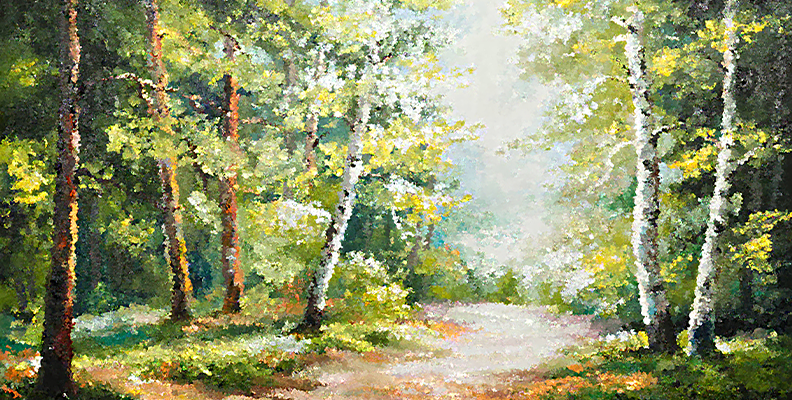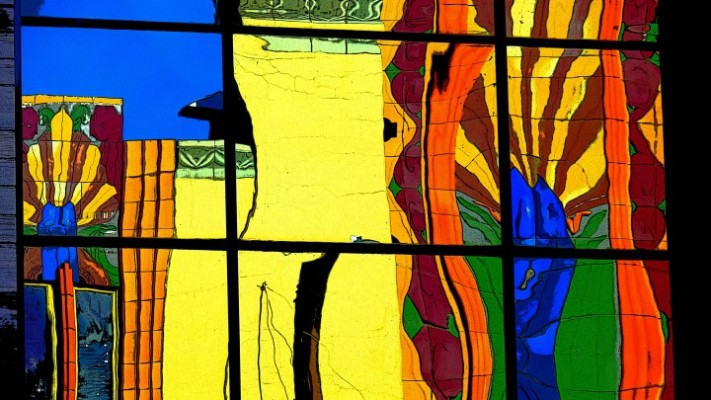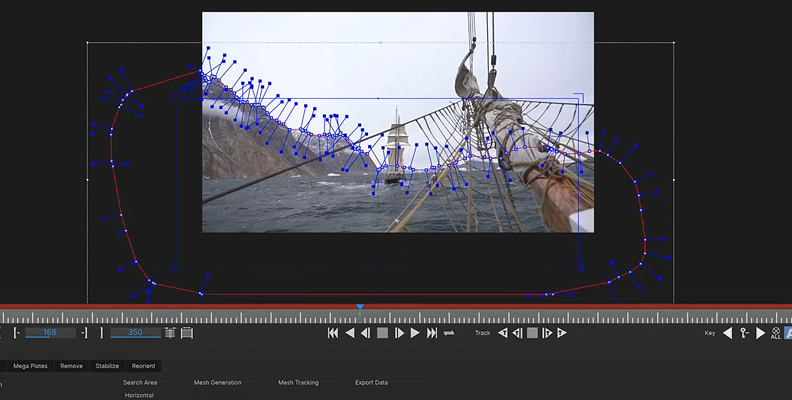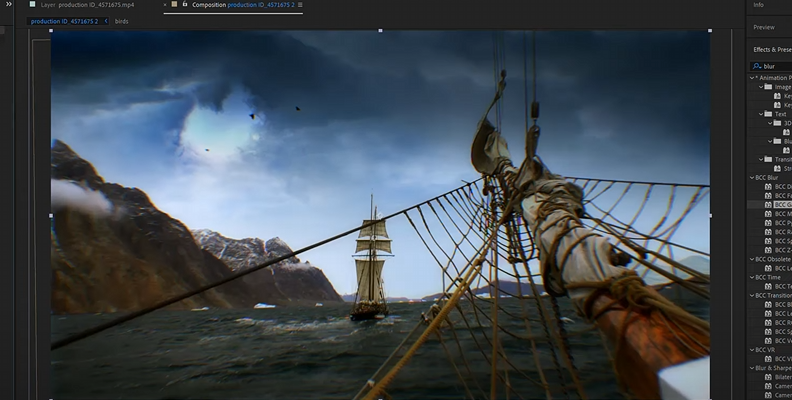The film, video games, and television industries have been on the rise for a long time. With the constant need for fresh and innovative content, creators must optimize everything and ensure their funds are used efficiently while impressing their viewers with their products.
As we all know, when recording content, the biggest challenges are first finding an adequate location and then making it available for shooting. However, sometimes not only it is difficult to access the required location for your specific content type, but it's also impossible, as for most sci-fi and fantasy genre scenarios such locations do not exist, so they must be created instead.
This is where the matte painting technique comes into play, and in this guide, we'll tell you all about it.
Without further ado, let's get straight into it.
What is Matte Painting?
Matte painting is a technique used in the film, television, and video game industries to create highly detailed and realistic backgrounds and environments that would be too expensive, impractical, or impossible to recreate or achieve through traditional on-location or practical set design.
It involves creating 2D or 3D images or paintings that are seamlessly integrated into live-action footage or computer-generated imagery (CGI) to enhance the visual storytelling of a scene.

Although similar, it still has some major differences compared to the virtual production technique. It's also different from photo manipulation.
The term "matte painting" originated in the early days of cinema when artists created glass matte paintings and placed them in front of the camera to create backgrounds for scenes. Unlike traditional matte painting, modern matte painting is predominantly done digitally, but the principles of creating realistic backgrounds remain the same.
Some say that the matte painting technique originated from the background pictures shown in theaters during performances.
Nowadays, seeing a glass matte painting is relatively rare, but there are still some art lovers who value the traditional methods and the effort required to create hand-drawn matte paintings, and even more importantly, artists who make them.
Digital matte painting is largely done using digital software like Adobe Photoshop, After Effects, Nuke, and sometimes Autodesk Maya, or various other 3D modeling and rendering programs. This allows for greater flexibility and precision in creating and compositing complex scenes.
If you want to see how digital matte painting is done in real-time, here's a super insightful video by Boris FX on this topic.
In larger teams, matte painters often collaborate closely with other departments such as visual effects, environment artists, cinematography, and art direction to ensure that the final composition meets the creative vision of the project.
As a matte painter, you must pay attention to detail and ensure every element you add to the composition matches the original lighting, perspective, color grading, etc., and make it as realistic as possible.
Matte painting is sometimes also used to create concept art. This helps producers and other creators to visualize something before executing, which in turn saves a lot of money on possible mistakes.
History of Matte Painting
The history of matte painting is closely tied to the development of cinema and the visual effects industry. The traditional painting methods have evolved over the years from practical, hand-painted glass mattes, stained glass window art pieces, and fine art to today's sophisticated digital techniques.

Here's an overview of the key milestones in the history of matte painting:
Early Cinema (1900s-1920s)
The use of matte painting in cinema can be traced back to the early 1900s. In these early days, artists painted directly onto glass panels (called "glass mattes"), and canvas backdrops, which were then placed in front of the camera.
This technique allowed filmmakers to create background elements or settings that were not physically present during shooting. Early silent films and pioneering filmmakers like Georges Méliès utilized matte paintings to create fantastical and imaginative worlds.
Development of Miniatures (1930s-1940s)
During the 1930s and 1940s, matte painting continued to evolve as artists painted backgrounds for miniature sets. These miniatures were often used to depict large and elaborate locations, like cities, that were too costly or impractical to build full-scale. The combination of matte paintings and miniatures became a standard technique for many Hollywood productions.
![]()
The Golden Age of Cinema (1950s-1960s)
The 1950s and 1960s are often considered the "Golden Age" of matte painting. Artists like Albert Whitlock and Matthew Yuricich became renowned for their work in creating highly detailed and realistic matte paintings for classic films, including "The Ten Commandments" (1956) and "Ben-Hur" (1959).
Transition to Digital (1980s-1990s)
With the advent of digital tools and digital technology, matte painting began to shift away from traditional, hand-painted matte paintings. Computer-generated imagery (CGI) and digital compositing tools allowed artists to create and integrate digital matte paintings more seamlessly into live-action footage.
Films like "The Abyss" (1989) and "Terminator 2: Judgment Day" (1991) marked significant steps in the transition to digital matte painting, and soon a new generation of digital matte painters was born.
Contemporary Digital Matte Painting (2000s-Present)
![]()
Today, digital matte painting is the industry standard. Artists use software like Adobe Photoshop, After Effects, Nuke, Autodesk Maya, and other tools to create highly detailed and realistic backgrounds.
The integration of CGI and digital matte painting has become a standard practice for creating complex and visually stunning environments in films, television, and video games, as well as digital art.
Oscar Recognition & Awards
Matte painters have been recognized with Academy Awards for their contributions to the film industry. The matte artist Albert Whitlock, in particular, received a Special Achievement Award at the 43rd Academy Awards for his outstanding traditional matte paintings in "The Birds" (1963).
The history of matte painting reflects the ever-advancing technology and artistic creativity in the field of visual effects.
While the techniques have evolved from hand-painted glass mattes to digital compositing, the fundamental goal of matte artists remains the same: to create realistic and immersive backgrounds that enhance the storytelling and visual appeal of films and other visual media.
The Process of Matte Painting in Films
The process of matte painting in films has evolved with technology, but it typically involves creating highly detailed and realistic background images that are integrated into live-action footage or computer-generated imagery (CGI) to enhance the visual storytelling of a scene. Here is an overview of the modern process of matte painting in films:
Concept and Planning
The process often begins during pre-production, where the director, production designer, and visual effects supervisor discuss the visual requirements of the film, including scenes that might benefit from matte painting.
The matte painter collaborates with the creative team to understand the artistic vision and narrative context of the scenes to be painted.
Location Scouting and Shooting
The live-action scenes are shot on location or on sets, and the footage is captured with the actors and any practical elements. Sometimes, blue screens or Green Screens are used to shoot scenes that will later be combined with matte paintings or CGI.
Previsualization and Storyboarding
For complex scenes, previsualization (previs) is used to plan camera angles, movements, and integration points for the matte painting.
Storyboards and animatics may be created to plan the composition of the scene, showing where the matte painting will be inserted.
Digital Matte Painting
The matte painter, often working digitally, creates a detailed background image. This involves using software like Adobe Photoshop, Autodesk Maya, or other 3D modeling and compositing tools.
The painting is based on concept art and references, and it incorporates lighting, perspective, and other visual elements to match the live-action footage.
Compositing
The live-action footage and matte painting are combined using compositing software like Adobe After Effects or Nuke.
Techniques such as masking, blending, color correction, and depth-of-field adjustments are used to seamlessly integrate the painting with the footage.
![]()
Lighting and Color Matching
The matte painting must match the lighting conditions and color grading of the live-action footage. This involves adjusting the matte painting's colors and lighting to make it appear as if it were part of the original scene.
![]()
Camera Movement and Parallax
If the camera in the live-action footage moves, the matte painting must account for this movement to maintain a consistent perspective. Parallax is created to simulate the depth and distance between objects in the scene as the camera moves.
Quality Control and Final Rendering
Extensive quality control is essential to ensure that the matte painting looks realistic and seamlessly integrated into the scene. This may involve revisions and feedback from the director and visual effects team.
The composited shot, including the matte painting, is rendered into the final format for the film.
Visual Effects and Post-Processing
Additional visual effects and post-processing may be applied to the entire scene to enhance the overall look, including elements such as particles, atmospheric effects, and color grading.
The process of matte painting in films requires a combination of artistic talent and technical expertise. It aims to create visually stunning and immersive backgrounds that seamlessly blend with live-action footage, enhancing the storytelling and visual quality of the film.
Final Words
With that said, you now know everything about matte paintings and how they're used in films to enhance storytelling and visual effects.
Hopefully, this information will help you incorporate your work better into future projects if you're a matte painter yourself, or that it satisfied your curiosity if you're just here to learn.














